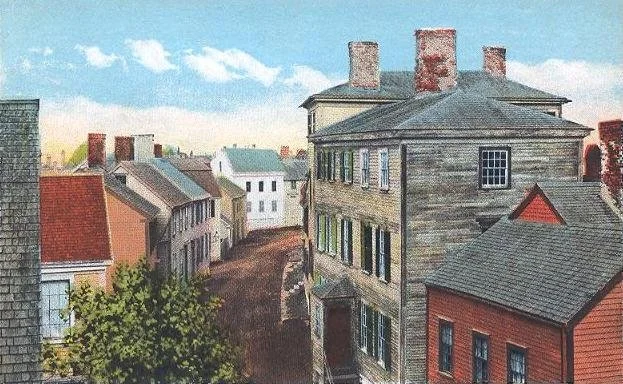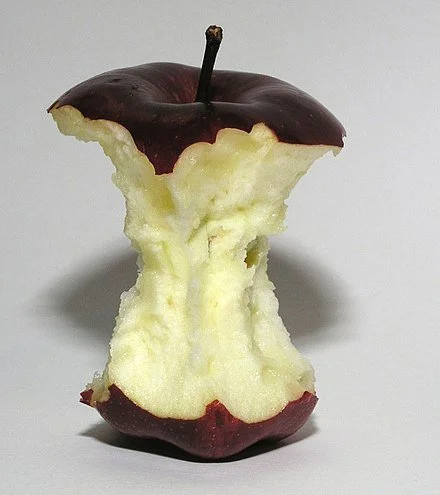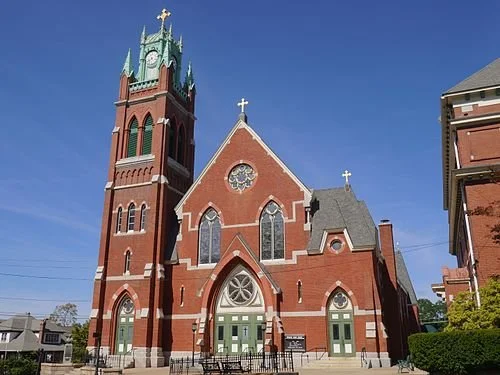
Andrew Warburton: Where pixilated' came from
English pixies playing on the skeleton of a cow.
— John D. Batten. c.1894
Front Street in Marblehead around the turn of the 20th Century.
1916 photo
Text excerpted from The New England Historical Society Web site
“When I say that the town of Marblehead on Massachusetts’s North Shore is unlike other coastal Massachusetts towns, I’m not simply referring to the fact that it’s teeming with fairies and pixies (which it is). Isolated from the state’s highway system on a remote peninsula, the town has always boasted a most unorthodox history.
“Think of it as the black sheep of Colonial New England. Whereas Puritans founded the surrounding settlements of Salem, Peabody, and Danvers to be pure and godly communities, Marblehead’s beginnings were more down to earth. According to historians Priscilla Sawyer Lord and Virginia Clegg Gamage, ‘irreligious settlers’ and ‘adventurous fishermen’ founded the town to escape the harsh dictates of Puritanism while making a living catching fish. In about 1629, these humble but industrious early settlers headed south east to a peninsula where the Naumkeag Tribe lived. They coexisted peacefully with the tribe while establishing the sleepy fishing village we know today.
“Over the next few hundred years, Marblehead saw an influx of fairy-acquainted immigrants from Scotland and the fishing regions of South West England: Cornwall, Devon, Dorset, and Somerset. According to the historian Samuel Roads, immigration from England’s South West accounted for what he called Marblehead’s ‘idiomatic peculiarities….’’’
Apple agritourism
Text excerpted from a The New England Historical society article
“Trying to pick six historic apple orchards in New England may be a fool’s errand. As Maine apple expert John Bunker explains, the notion of a commercial orchard is relatively modern.
“‘At a certain point, everyone had an orchard,’ Bunker told the New England Historical Society. ‘Everyone lived on a farm, and every farm had an orchard.’
“In the 1920s, a New Hampshire farmer came up with the idea of bringing tourists from Boston to pick their own apples in the fresh air and sunshine. The idea took hold. Today, 200-year-old farms are weathering developers (if not the weather) by diversifying with farm-to-table meals, cider, kids’ play areas, ready-to-eat food, hayrides, sleigh rides, corn mazes and even seasoned firewood.
“Agritourism today is just as much a feature of the New England landscape as history tourism. Here, then, are six historic apple orchards, one in each New England state.’’
To read the whole article, please hit this link.
French-Canadians at New Year's
L'Église du Précieux Sang (also known as The Church of the Precious Blood) has served the large French-Canadian population of Woonsocket, R.I., area since the 1870’s.
The Fleur de Lis, the symbol of French Canada.
From a New England Historical Society article on French Canadians in New England:
“The reveillon is a long, late dinner preceding a holiday. Tourtiere is central to the meal. The celebrated meat pie, cooked and eaten during the shortest days of winter, often accompanies traditional Franco-American foods such as peas or pea soup, head cheese, croquignoles and ragout.
“During the first half of the 19th century, when the first wave of immigrants arrived, New Year’s Day exceeded Christmas in importance. On January 1, Franco-Americans exchanged small gifts, and children found presents under the tree or near the manger in the parlor. Sometimes their parents told them the presents came from le Pere Noel (a skinny version of Santa Claus) or l’Enfant Jesus.’’






